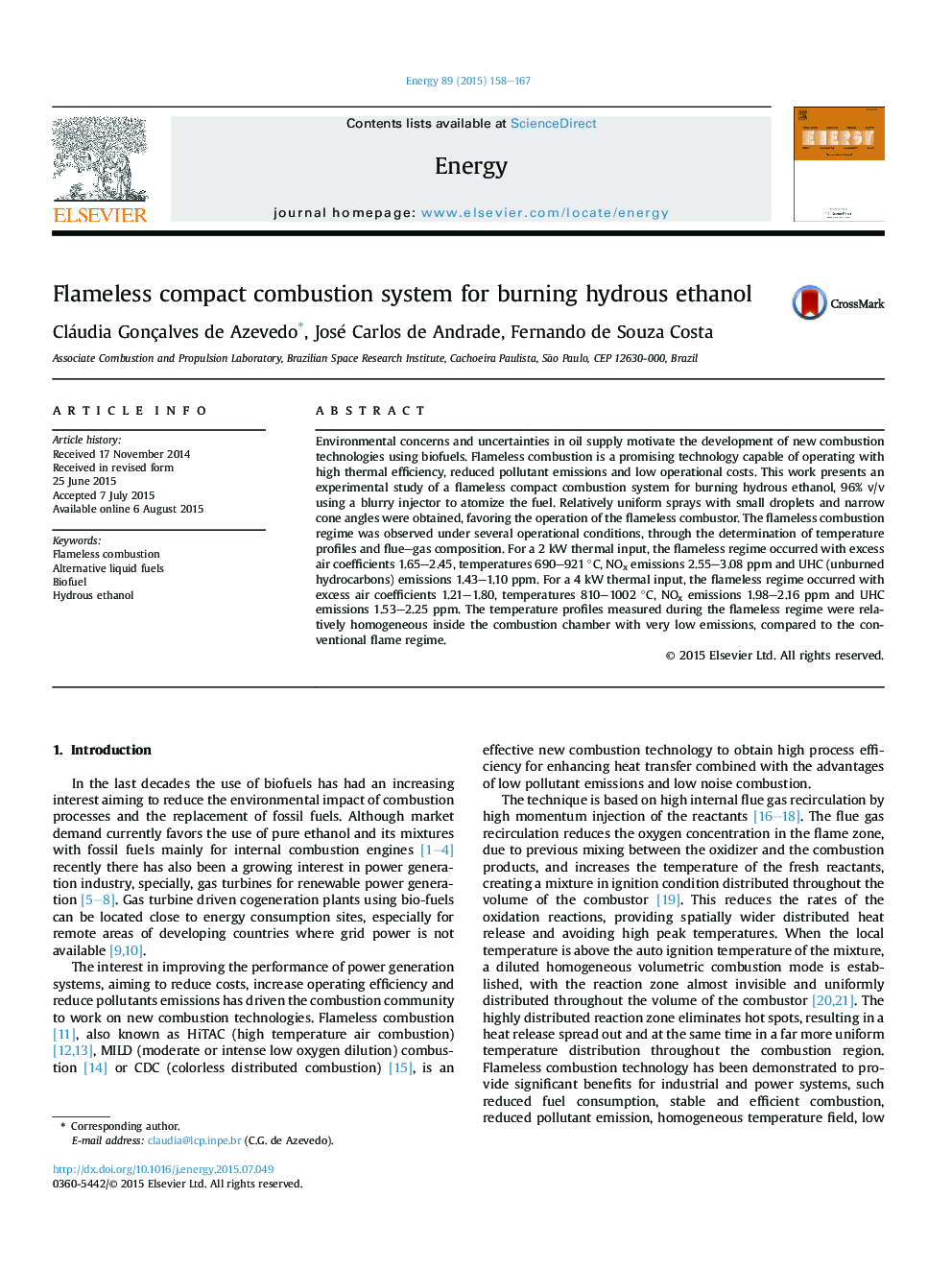| Article ID | Journal | Published Year | Pages | File Type |
|---|---|---|---|---|
| 1731895 | Energy | 2015 | 10 Pages |
•Experimental study of a flameless combustion system for burning hydrous ethanol.•Temperature profiles and pollutants emissions were measured.•Uniform temperature profiles were obtained for different excess air coefficients.•Low pollutants emissions were produced for all operating conditions.
Environmental concerns and uncertainties in oil supply motivate the development of new combustion technologies using biofuels. Flameless combustion is a promising technology capable of operating with high thermal efficiency, reduced pollutant emissions and low operational costs. This work presents an experimental study of a flameless compact combustion system for burning hydrous ethanol, 96% v/v using a blurry injector to atomize the fuel. Relatively uniform sprays with small droplets and narrow cone angles were obtained, favoring the operation of the flameless combustor. The flameless combustion regime was observed under several operational conditions, through the determination of temperature profiles and flue–gas composition. For a 2 kW thermal input, the flameless regime occurred with excess air coefficients 1.65–2.45, temperatures 690–921 °C, NOx emissions 2.55–3.08 ppm and UHC (unburned hydrocarbons) emissions 1.43–1.10 ppm. For a 4 kW thermal input, the flameless regime occurred with excess air coefficients 1.21–1.80, temperatures 810–1002 °C, NOx emissions 1.98–2.16 ppm and UHC emissions 1.53–2.25 ppm. The temperature profiles measured during the flameless regime were relatively homogeneous inside the combustion chamber with very low emissions, compared to the conventional flame regime.
